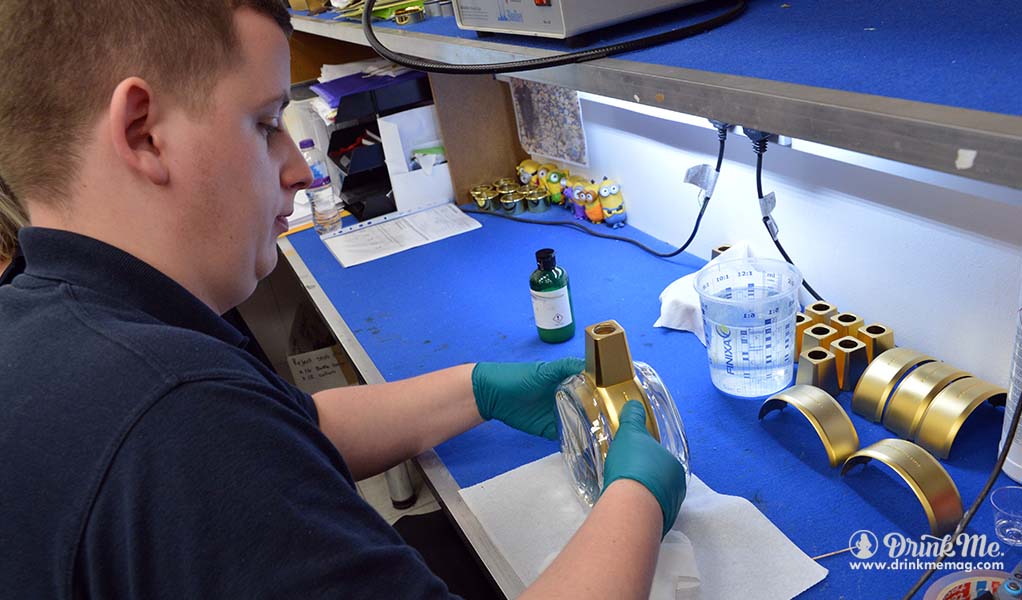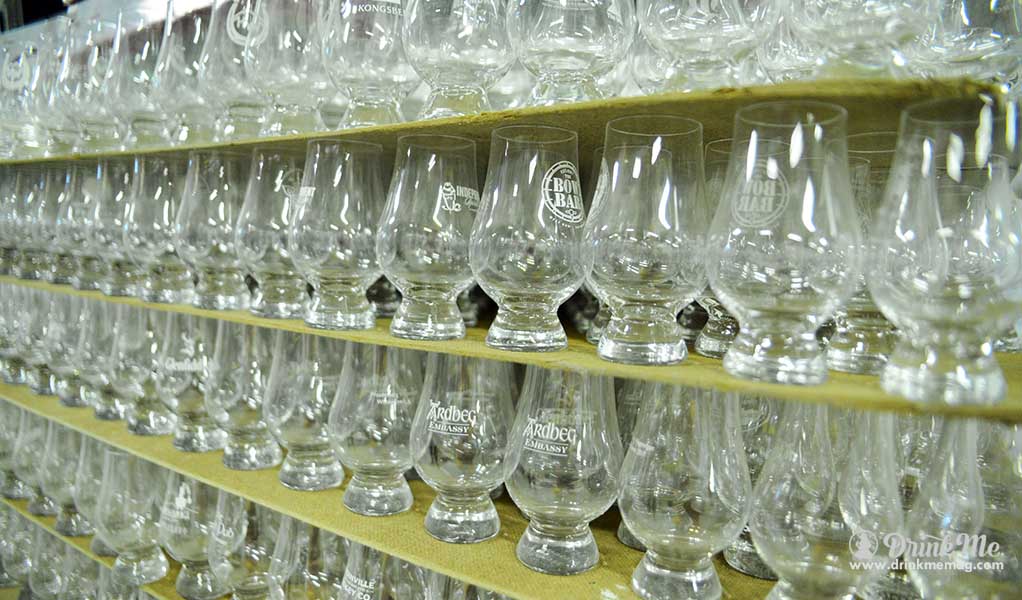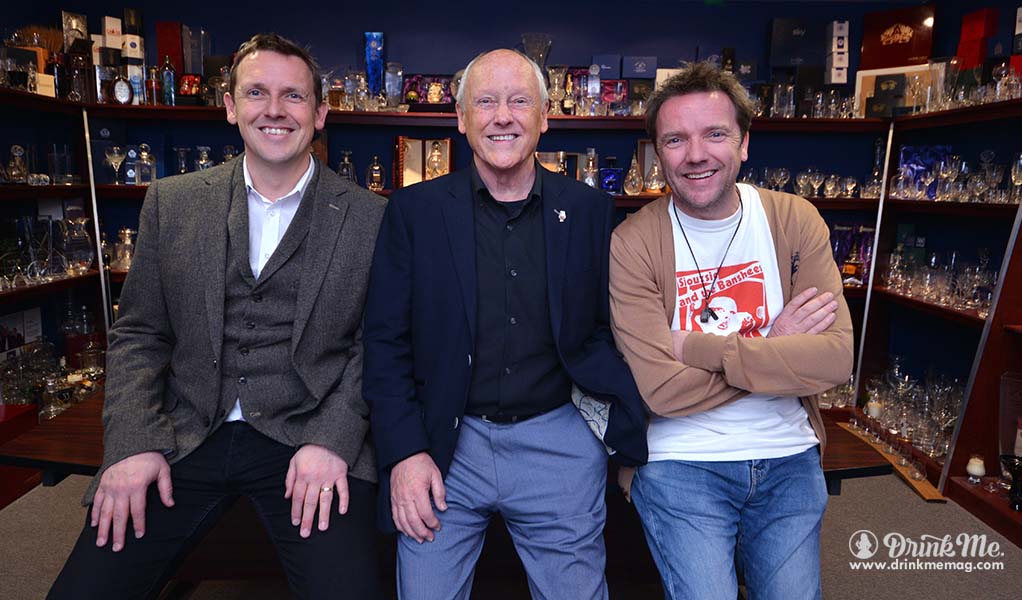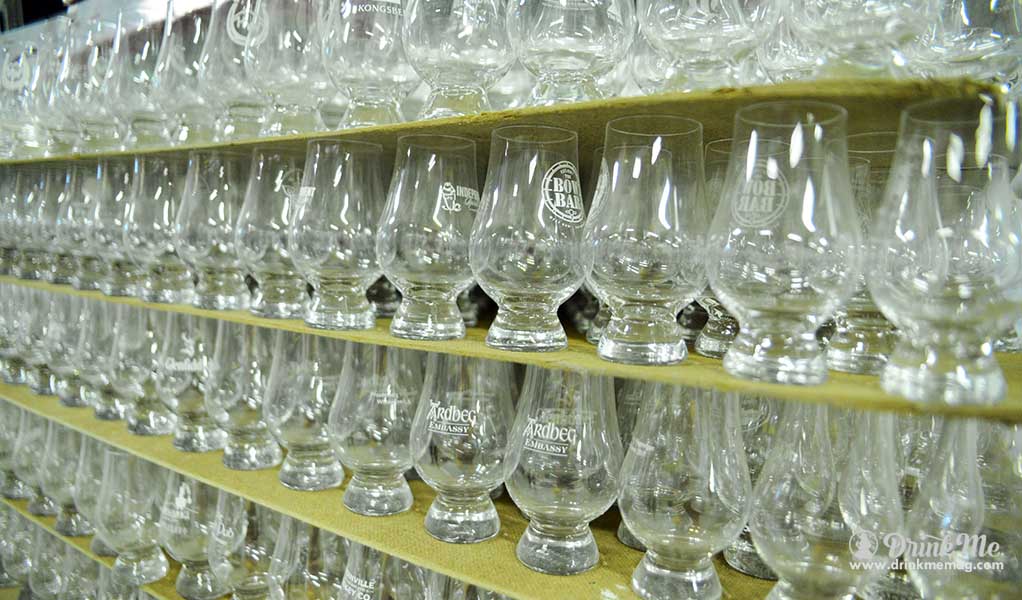Sometime in the late 1970s a young musician was working at Edinburgh Crystal. A whisky company came to the Edinburgh Crystal with a silver stags head and asked about the possibility of creating a decanter for the stag’s head to sit upon. The stags head was a Glenfiddich stag. Glenfiddich have always been innovative, and rather than melting down the silver, wished to put it to good use. The young musician was part of the team involved in the project, and the team were soon to learn that there wasn’t just one stag’s head but over one hundred and fifty of them. This set the musician thinking there might be a market for decanters in the whisky industry.
It was Christmas 1980 in the Davidson Household of Cairn Cross. Raymond’s sons had noticed something enormous behind the curtains in their bedroom and were very excited. Raymond Davidson was also very excited, as he had just purchased his first compressor. At over half a ton and taking up quite a bit of space his sons were not quite as excited. This was the start of Glencairn Crystal, the name simply coming from an amalgamation of the name of Raymond’s house and the street his mother lived on.
This was a small business at first, but before too long something big happened. The largest ship in the world at the time the Queen Elizabeth the second, QEII for short, needed some decanters, and Raymond pitched for the job. Not knowing how to approach such a pitch, Raymond made the best pitch he could. Other companies sent decanters with mock ups of engraving, even stickers in place of the words which would fall on the glass, but Raymond had sent a fully engraved decanter in a smart presentation box, and this was what the company wanted. He had to make 5000 of them, and quickly. Now by this time Raymond had moved his business out of his house, but the workshop was still very small with very few employees. In true Scottish fashion everyone mucked in. Raymond and his whole family got to work, his sons were teenagers at the time and roped in one of their cousins, Jason. They worked all the hours god gave them, and managed to complete the order in time.

Photo Credit: Colin Hampden-White
From this point Glencairn has been making Crystal decanters for the drinks industry. The decanters are mostly for whisky, but they include decanters made for Rum, Port and even Vodka in the form of a bottle sold for over £1000 by Stolichnaya. The company are very skilled at combining metal work and glass and work with incredibly skilled metal workers and engravers, and all the decanters produced with that same work ethic which created the QEII decanter.
Let us briefly move away from the world of incredible decanters. In 1980 Raymond also had another idea, still involving Crystal, but not decanters. He noticed there were no dedicated glasses for whisky which worked well in a bar for delivering flavour, but also practicality for the staff. He produced a prototype glass and it was called the Glencairn. This glass then sat in the back of Raymond’s mind for over twenty years, and in 2001 the company came back to the idea and with very little modifications made the Glencairn glass we know today. It was a huge success and they now ship more than three million of them each year all over the world. It has been such a success that it makes up about one third of the company’s business. So, what of the other two thirds of the company’s business? Most of us assume, me included, that the majority of business for Glencairn was the little glass Raymond created and brought him the much-coveted Queen’s award for innovation. The reality, is that Raymond’s business started with making decanters and that is predominantly what they do today, and the way this business has continued to exist and grow so well is all down to innovation.

Photo Credit: Colin Hampden-White
Where other companies might shun a project for being difficult or considered impossible, Glencairn will take up the challenge. This sometimes means they may make little profit on a particular project, but as Raymond’s son Paul, who became Managing Director around seventeen years ago says, “we learn, every time we do something new or difficult we learn something new, or we improve on an existing process”. A very good example of this is the gold lettering you see on bottles. In the past the gold was too easy to pick off or get knocked off as the gold was either placed on the surface or the engraving too shallow. Glencairn pioneered the idea of deepening the engraving to an extent that the gold, or any metal for that matter, would be near impossible to pick out or become dislodged. This process takes a huge amount of skill. This sandblast engraving is not done by machine. Like all the sandblast engraving at Glencairn it is done painstakingly by hand, and the deep engraving is the most difficult, and unbelievably, it is all done by eye and feel. There is no measuring stick to guide the workers. This level of skill takes time to acquire, which is fine with the staff at Glencairn as they have no intention of going anywhere. From the family down, the staff at Glencairn are there for the long term. There used to be jobs for life, and at Glencairn there still are. Scott, or second son as Raymond calls him, is a director for the company and joined in 1992 as operations director. He tells us that the staff are an extended family, there are no favourites and their development is paramount. Around eight years ago, Glencairn took on eight apprentices, and six of them are still with the company. There are staff who have been there since the very beginning.

Photo Credit: Colin Hampden-White
One of the most influential members of staff was Jim Drysdale. Jim was a freelance artist and much of his work was illustrations, but the bulk of his work came from designing whisky labels and cartoons. During this time he became great friends with Raymond and when the first factory was opened Jim joined the company and was there for nearly thirty years. He sadly passed away in 2012, but so much of his skill and humour can be seen on the walls, in cartoons made for the family, designs for the company, and in the boardroom sits his guitar, a gift to Paul Davidson. Paul, like his father, is an accomplished guitar player and could have received no better thing to remember Jim by.
The decanters come in all shapes and sizes, and they have made decanters we whisky drinkers will have seen time and time again and have had no idea who made them. For example, the Dalmore constellation series, pagoda series for Glenfarclas, and the 1974 Glenmorangie Pride bottle with all its intricate metal work were all made at Glencairn. I could mention hundreds more, but a good rule of thumb to go by is that if a bottle or decanter isn’t being marketed as being made by Lalique or Baccarat, then it is likely to be made by Glencairn. Having discovered the true nature of Glencairn Crystal I am astonished, that with the quality they produce, that the marketing men at the whisky companies don’t use Glencairn as a positive message when selling their wares.

Photo Credit: Colin Hampden-White
When you sit down to a whisky served in a Glencairn glass, have a look at the receptacle it was poured from, and if it is fine and elegant with exceptional eye on the detail and quality, it is likely to have been made by the Davidsons and their extended family.










